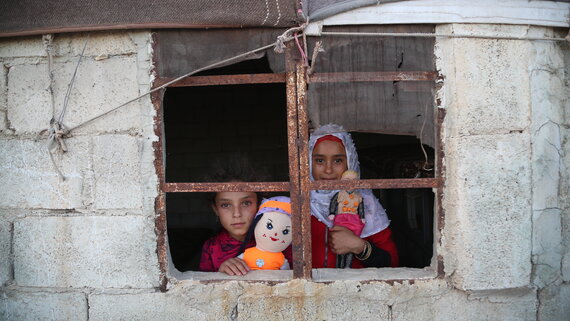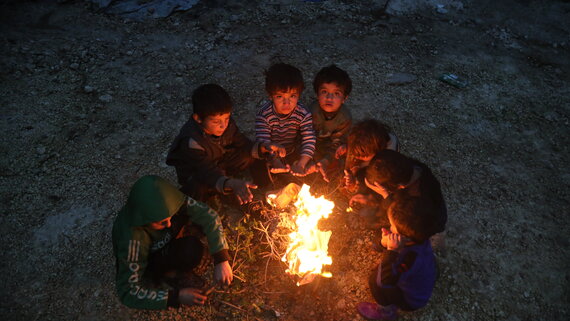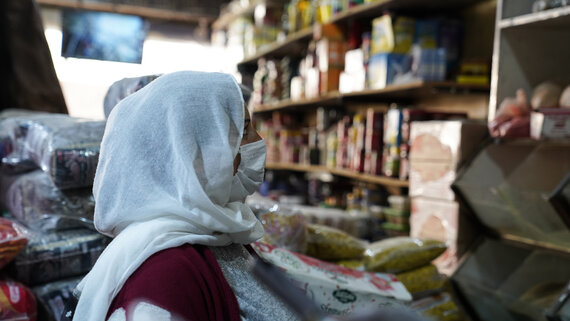Crisis overview and projections
After 12 years of hostilities and persistent economic crisis, people in Syria saw their situation worsen when a series of earthquakes hit northern Syria and Türkiye as of 6 February 2023. The earthquakes resulted in almost 5,900 deaths and more than 12,800 people injured. Many families lost their main breadwinner due to death or injury, at a time when the economic situation was already dire, resulting in millions of people unable to meet their basic needs. The earthquakes have uprooted hundreds of thousands of families. Already prior to the earthquakes, 15.3 million people (7.7 million women, 7.6 million men) were assessed to need humanitarian assistance across the country. Of the 15.3 million people in need, some 4.1 million were living under extreme or catastrophic conditions.
As Syria grappled with the aftermath of earthquakes, economic indicators took a further downturn. High inflation, currency depreciation, and increases in commodity prices continued to drive humanitarian needs in Syria. This resulted in an increase in poverty and reliance on humanitarian assistance. The situation also drove some population movement in Syria, as families moved in search of livelihood opportunities and better access to basic services. The economic decline created a compounding impact on access to services already affected by the earthquake. The economic crisis also increased the cost of the humanitarian response.

Aleppo City, Aleppo, Syria
Search and rescue teams in action following an earthquake.
OCHA/ Sevim TurkmaniIn October 2023, northern Syria and Deir-ez-Zor Governorate witnessed the most significant escalation of hostilities since 2019, resulting in the displacement of over 120,000 people in north-west Syria. More than 40 health facilities, 27 schools and 20 water systems were impacted by shelling. Regular attacks on critical civilian infrastructure, including water and electricity, left people without access to basic services in north-east Syria, while humanitarian access was negatively impacted by ongoing hostilities. As of mid-year 2023, the severity of access was found to be very high in nine sub-districts, moderate in 50 sub-districts and, low in 99 sub-districts. Deir-ez-Zor Governorate was identified as having the highest number of hard-to-reach sub-districts.
A rift between armed actors coupled with community tensions in the Governorate led to displacement of thousands of civilians. With the regional military dynamics at play, it is expected that the conflict in northern Syria and Deir-ez-Zor Governorate will further intensify, leading to significant increase in humanitarian needs.
While the full overview of needs will be published in January 2024, humanitarian partners estimate that at least 15.3 million people may be in need of humanitarian assistance in 2024.

Syria
Two girls look through the window of a house, they have been displaced with their families due to hostilities.
OCHA/Bilal Al-HammoudResponse priorities in 2024
The humanitarian community will introduce a new two-year HRP covering 2024 and 2025. The response will continue to focus on the key drivers of needs, which are protection threats, rights violations, economic deterioration, unavailability of basic services as well as environmental shocks. In a context of rising needs, humanitarian partners will address people’s most urgent needs, including by expanding critically required early recovery and livelihood support programming as well as access to basic services through investments in critical civilian infrastructure required for service delivery, among other approaches. While increased efforts are made to target only those most in need and prioritize interventions, the funding forecast for 2024 is bleak. Without sustained assistance, vulnerable households are likely to continue slipping deeper into poverty. A potential continuation of hostilities that escalated in September 2023 will have devastating impact on civilians and on the already damaged infrastructure.

Idleb, Syrian Arab Republic
The Al-Mahata Camp is part of the Armanaz cluster camps near Al-Baali’ah village, Idleb. This camp is home to 238 displaced families.
OCHA/Ali Haj Suleiman
Syrian Arab Republic
Emergency Cash and Voucher Assistance in crisis: Coordination and lessons learnt

Following the 7.7 magnitude earthquake that struck southern Türkiye and north-west Syria on 6 February 2023, Cash and Voucher Assistance (CVA) was selected as the most appropriate response modality. Within a week, US$1.8 million of multi-purpose cash (MPC) was distributed to 13,000 affected families, who were either homeless, displaced, or in need of medical care. MPC's unique capability is its ability to meet diverse needs through a single distribution. This approach not only provides immediate relief but also aids local economic recovery. The rapid fund distribution was possible thanks to experienced partners and established rapid-response frameworks. Furthermore, MPC is aligned with the principles of Accountability to Affected People (AAP) as it gives affected families the freedom and dignity to be the decision-makers to buy what they need most. In GoS controlled areas, almost 133,400 individuals benefitted from MPC amounting to US$5 million and distributed between February and August 2023. CVA will continue to be encouraged in 2024.


